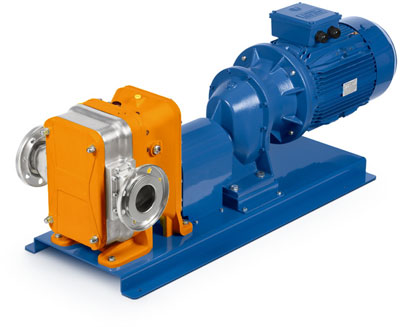Optimising the Life of Industrial Pumps
Pumps are found in almost every sector, with functions such as the transportation of liquids and other mediums, provision of cooling or lubrication to other components, and force for hydraulics systems. Pump reliability is often critical to operation. In cooling systems, pump malfunction could lead to over-heating and catastrophic machine failure. In lubrication systems, a pump failure could destroy equipment. When used for transportation or hydraulic power, inadequate pump performance could cause a reduction in productivity, or even lead to unplanned downtime.
 When a pump malfunctions, it is tempting to simply replace the entire component. However, as well as being expensive, this requires significant upheaval, whilst the old machine is removed and a new one is installed. Upgrading the component, for example through re-lubrication or by installing new bearings, is often cheaper and less disruptive than full replacement.
When a pump malfunctions, it is tempting to simply replace the entire component. However, as well as being expensive, this requires significant upheaval, whilst the old machine is removed and a new one is installed. Upgrading the component, for example through re-lubrication or by installing new bearings, is often cheaper and less disruptive than full replacement.
There are many ways to improve pump reliability, although individual application requirements need to be taken into consideration in order to determine the most suitable method. One way to improve reliability is to consider the sealing and lubrication requirements of bearings used in the pump. In humid environments such as a pulp and paper mill, bearings are at risk of corroding through water ingress. To counteract this, consider using a sealed bearing, which is “greased for life”. These bearings are designed to keep the grease in and contaminants out, protecting the bearing against corrosion and water damage, and improving system reliability.
“It is widely accepted that predictive maintenance can increase asset life by up to 60%”
Another effective method of increasing pump reliability would be to install a condition monitoring system. This measures temperature, vibration and lubrication levels, in order to determine the bearing condition and alert operators of any potential issues, before failure occurs. It is widely accepted that predictive maintenance can increase asset life by up to 60%, and just one early fault detection can offset the cost of predictive maintenance programme. Therefore, a condition monitoring system is worth considering, in order to improve pump reliability.
It is also essential to ensure that there is no misalignment of the bearings within the pump, as seals are only able to accommodate up to 0.5º of misalignment. Using a shaft alignment tool such as the SKF TKSA Series will ensure that the shaft is accurately aligned, so that the seal is able to function correctly, and the bearing is fully protected.
With pumps consuming over 20% of energy generated by motors across the world, and approximately half of that energy being wasted through shock losses, internal leakage and friction, efficiency has never been more critical. One of the most effective ways to increase efficiency is to install a variable speed drive (VSD). When done correctly, it is possible to reduce energy consumption by up to 30% by introducing a VSD. However, the electrical output of a VSD can cause electrical arcing, which can degrade and even destroy the bearing, very quickly. To prevent this from happening, it is necessary to install insulating bearings, or bearings which are able to withstand electrical arcing. This may seem like a costly option, but the cost savings that a Variable Speed Drive could bring to a pump application are likely to outweigh the initial outlay required.
Individual system requirements need to be taken into consideration to ensure that the most effective method of optimising pump life is selected, and to give the pump the best chance of achieving a long and reliable service life. If you would like help in optimising the life of your industrial pumps, or further advice, our experienced product managers are available for onsite visits. Contact your nearest ACORN branch today.
